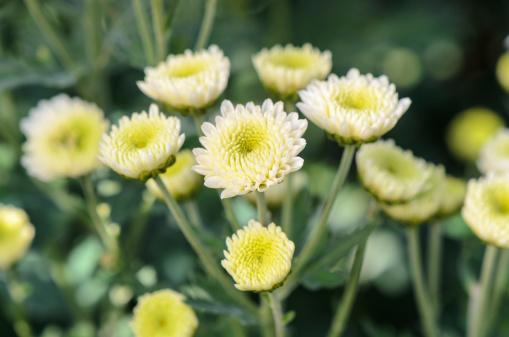On August 6, 1945, the first atomic bomb ever used in warfare was dropped over the city of Hiroshima in Japan. Three days later, a second atomic bomb was dropped over Nagasaki. Tens of thousands of civilians were killed from the blast and radiation poisoning.
However, at St. Francis Hospital in Nagasaki, many patients and staff survived, even though the hospital was less than one mile from the site of the blast.
It was Dr. Tatsuichiro Akizuki, the hospital’s director of the department of internal medicine, who saved the lives of his patients and staff through his knowledge of the traditional yin and yang concepts. He forbade his patients and workers from eating sugar and sweets, which are very yin foods and thus expanding energies.
Dr. Akizuki prescribed a diet consisting of very yang foods, which have contracting energy, to counterbalance the extremely yin and expanding nature of the atomic blast. He fed them seaweed, miso soup, and other yang foods, such as tamari and sea salt.
In his memoir, Dr. Akizuki mentions 30 people by name—patients and staff—who ate his prescribed diet. Sixty-one years later, researchers discovered that nearly a third of those people were still alive, a remarkable fact given that the blast killed 90 percent of those within a 0.6-mile radius, according to estimates cited by the United Nations.
Benefits of Sea Vegetables
From the macrobiotic perspective of yin and yang, seaweed is one of the most yang vegetables, considered more yang than land vegetables partly because they grow in the salt water of the oceans. They are tough and do not decay or disintegrate as fast as land vegetables. The process of drying also makes seaweed more yang.
Since ancient times, humankind has been harvesting and eating seaweed. The Chinese, Koreans, and people from Southeast Asia have been eating sea vegetables since time immemorial. Even people in Western countries had a tradition of eating seaweed obtained through trade. Today, we tend to associate seaweed with Japanese food because of the great variety of seaweed used in Japanese cuisine.
Never have these sea vegetables been more pertinent in our modern high-tech lifestyle. Day in and day out, we are constantly bombarded by electromagnetic radiation (EMR) from cellphones, microwave ovens, and other devices. While exposure to these low-level EMR will not kill or make us ill immediately, constant exposure could have a detrimental affect on our health.
Seaweed is one of the healthiest foods on our planet, loaded with nutrients like vitamins, minerals, and antioxidants. One of the most outstanding benefits of eating seaweed is their ability to protect us from radiation. Seaweed is rich in iodine and sodium alginate, both of which are effective in protecting and eliminating radioactive materials from our body.
Various studies have indicated that eating seaweed offers some protection from the harmful effects of radiation.
Dr. Stanley Skoryna and a team of researchers at McGill University in Montreal, found that radioactive strontium can bind with alginates (part of the cell-walls of brown algae) and be excreted from the body. Another study conducted by J. F. Stara of the United States Environmental Protection Agency, indicated that sodium alginate present in seaweed could significantly reduce radioactive strontium in the bones of cats.
Types of Seaweed
Seaweed can be classified into brown, red, or green. The colors of the algae are not a good indicative of the actual color of the seaweed. Dried kombu and wakame look dark green. Arame and hijiki look almost black, while red algae can be pink or purple. Nori, when made into sushi sheets, is more dark green or black in color.
Here, some of the popular edible seaweed is classified:
Brown Algae
Arame
Hikiji
Kombu (Kelp)
Wakame
Red Algae
Coralline
Dulse
Nori (Laver)
Agar agar (Kanten)
Green Algae
Chlorella
Spirulina
Red and green seaweed are softer and have a milder taste than the tougher and stronger-tasting brown seaweed. Brown seaweed generally have more nutrition than red or green seaweed. One nori sheet has about 16 micrograms of iodine while brown algae can contain up to a few thousand micrograms of iodine. Hijiki has about 14 times more calcium than milk, while red and green algae contain about 7 times more calcium than milk.
Among the sea vegetables, brown seaweed are more yang. It is best to eat smaller portions of brown seaweed and to have them less often. Red and green seaweed are softer, milder, and more yin; hence they can be eaten more often and in larger amounts.
Different Sea Vegetables
The following are some seaweed that are commonly used in food recipes.
Kombu
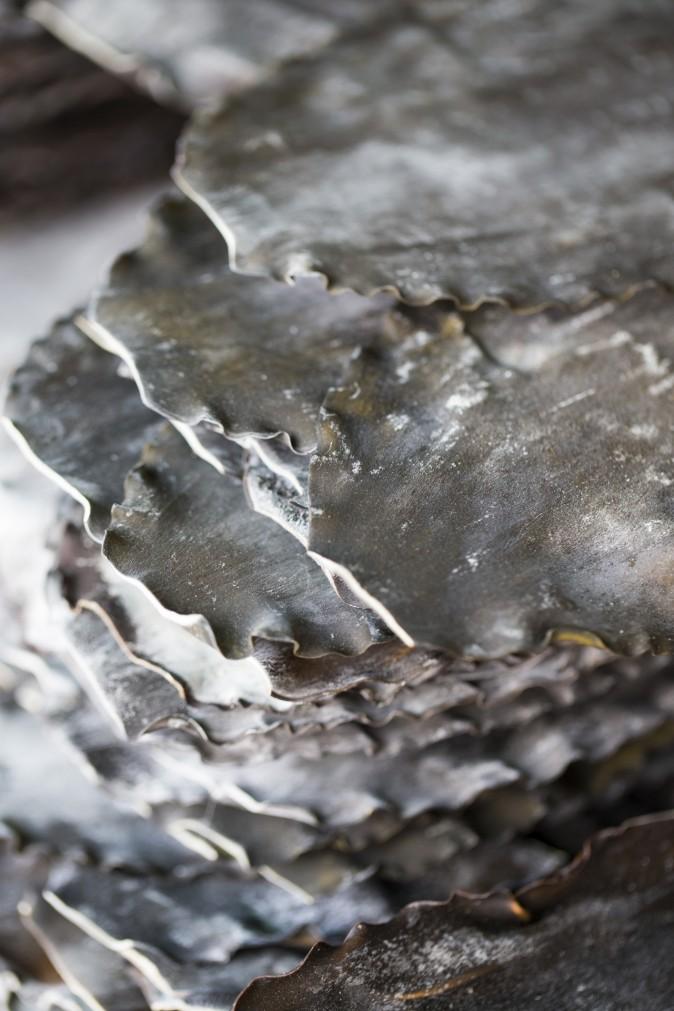
Add kombu to rice, beans, or vegetable dishes to soften their texture and add nutrients. (Jonathan Austin Daniels/photos.com)
Kombu is a Japanese word for edible kelp. It is called haidai in Chinese or dashima in Korean. The mention of kombu can be traced back to the 3rd century A.D. in China where it documented in the medical text, Wupu Bencao.
Kombu is used as a flavor enhancer in nabe or hot pot dishes and in soup stock. It is also added to brown rice, beans, or root vegetables to soften the texture of the food. To use it this way, add a one or two-inch strip to the dish. Today, kombu is readily available fresh, dried, or frozen in most Asian grocery stores.
Nori
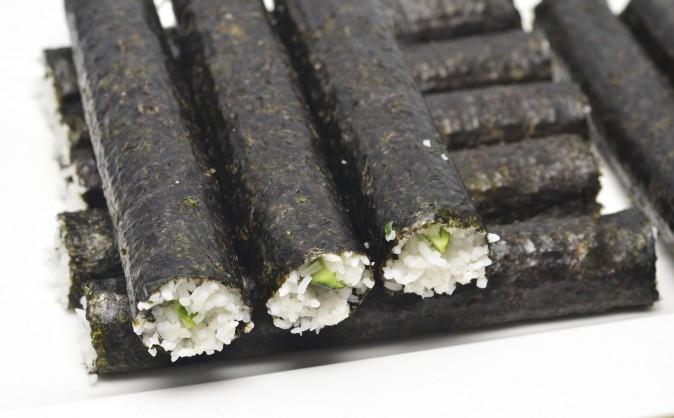
Nori seaweed is a good source of omega-3 fatty acids, vitamin B-12, and vitamin C.(RusN/photos.com)
This is probably the most familiar type of seaweed for most of us. Nori comes in paper-thin sheets (8 inch by 8 inch), which are used for sushi rolls or in flakes as a condiment. Nori seaweed has one of highest quantities of protein among the marine vegetables, about 50 percent of it in dry weight.
One sheet of nori has as much fiber as one cup of raw spinach and one nori sheet contains more omega-3 fatty acids than one cup of avocado. Nori contains vitamin B12, which is essential for memory and cognitive function. It is rich in vitamin C, which is a powerful antioxidant.
Wakame
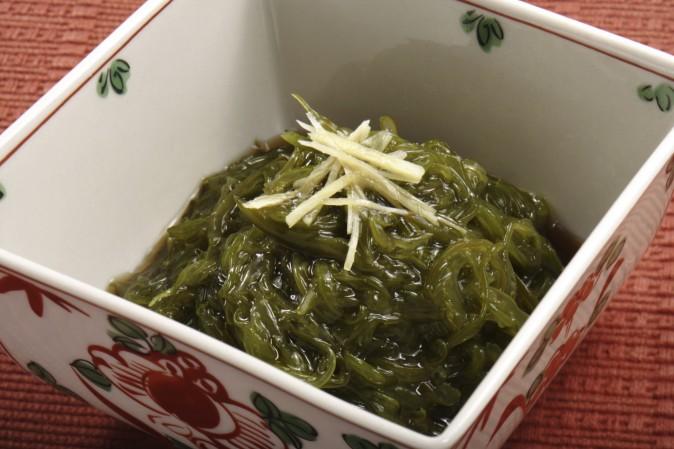
In oriental medicine, wakame is a blood purifier, improves the intestines and reproductive system, and helps regulate menstrual flow.(whitetag/photos.com)
Besides nori, wakame is another widely eaten seaweed that is used in miso soups and salads. According to Oriental medicine, wakame is a blood purifier. It improves the intestines and reproductive system, and helps regulate menstrual flow. Nutritionist and author of You Are What You Eat Cookbook, Gillian McKeith dubbed wakame the women’s seaweed.
Wakame is probably one of the most researched seaweed. Various studies have indicated that fucoxanthin, a compound found in wakame, can help to reduce fatty tissues.
You can use a few small pieces of wakame everyday in your soups and about half a cup serving in salads or side dishes once or twice a week.
Dulse
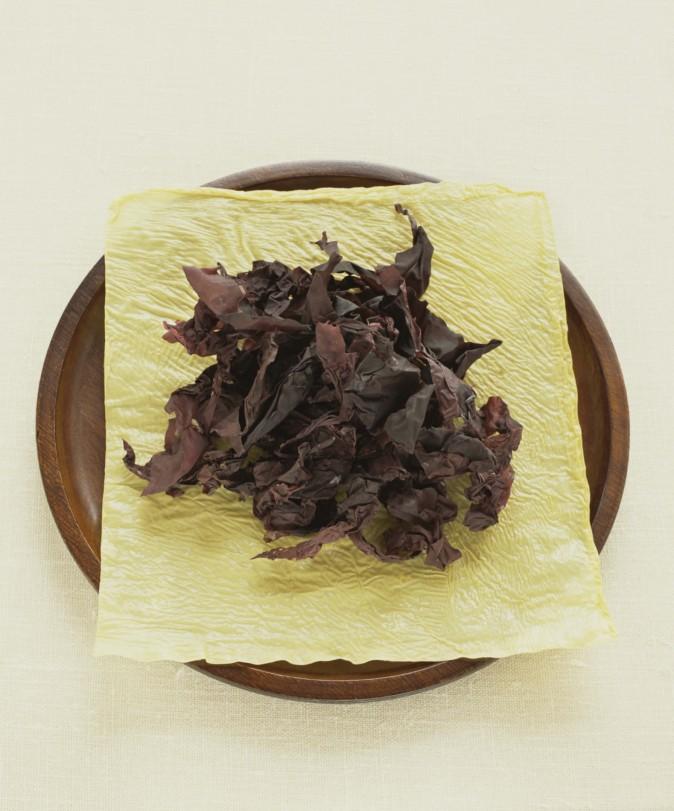
Dulse flakes or powder can make a good condiment to sprinkle on foods. (Jupiterimages/photos.com)
This red seaweed is frequently eaten in along the coastal areas of Canada, the U.S., and U.K. Like wakame and nori, dulse is used in soups and salads. Two- to three-inch pieces of dulse can be eaten daily or few times a week.
Dulse flakes or powder can make a good condiment to sprinkle on foods. Use about one-quarter teaspoon for each person during a meal.
Other algae like chlorella and spirulina from the green algae family are becoming known as superfoods and are used often and liberally as health food supplements. Besides the anti-radiation effects, the benefits of eating sea vegetables are many. One of the exceptional benefits of sea vegetable is the iodine content, a mineral that is missing from most foods.
Note: These natural food remedies are for maintaining your health and wellness. They are not meant to replace any medical treatment. If you have a diagnosed condition, or in doubt, you should always seek medical advice.
Dr. Margaret Trey has a doctorate in counseling from the University of South Australia. She was trained in oriental medicine, shiatsu, and macrobiotics, and worked as a wellness counselor for over 20 years. Now based in New York, Dr. Trey writes and continues researching the effects of meditation on health and wellness.



